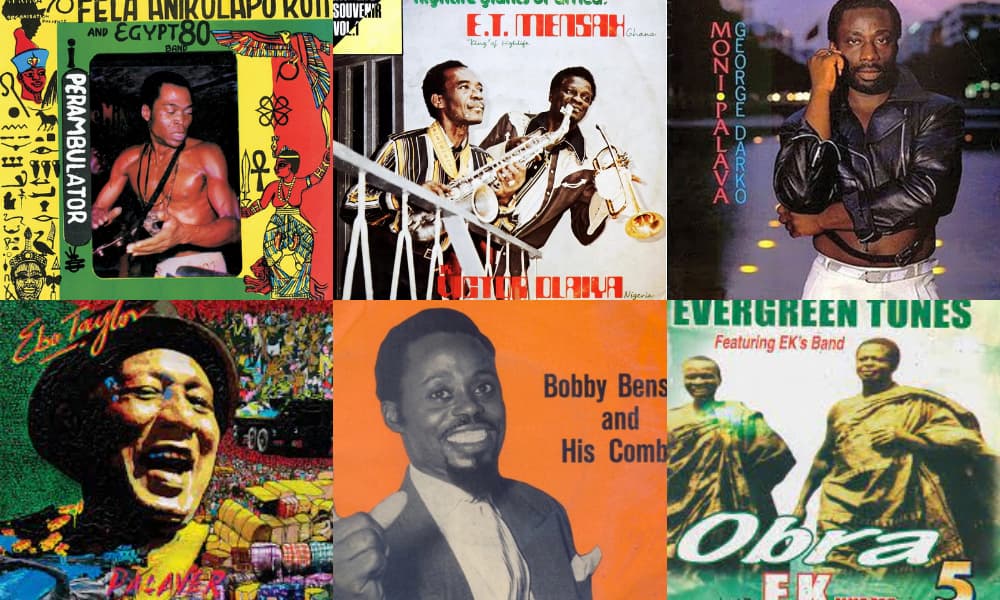Highlife Music
Estimated reading time:

Highlife music, a genre synonymous with the vibrant cultural landscape of Ghana, stands as a sonic testament to the nation's rich history and diverse influences. Characterized by its infectious rhythms, melodic guitar lines, and lyrical storytelling, Highlife has carved a unique niche in the world of African music. In this article, we embark on a journey through the origins, evolution, and enduring charm of Highlife music.
Roots and Origins
Highlife music traces its roots back to the early 20th century, emerging from the coastal regions of Ghana where diverse cultural influences converged. The genre is a melodic fusion of traditional Ghanaian rhythms, European brass band music, and the jazz and swing sounds brought by African-American sailors.
Palm wine music, a genre originating from Sierra Leone and Liberia, also played a crucial role in shaping Highlife. The guitar-centric style of palm wine music blended seamlessly with local rhythms, giving birth to a distinct Ghanaian sound.
Key Elements of Highlife
- Guitar Mastery: Highlife is renowned for its intricate guitar work, with musicians skillfully blending Western guitar techniques with traditional African rhythms. The guitar serves as a melodic storyteller, conveying emotions and narratives through its notes.
- Versatile Instrumentation: Highlife bands typically feature a diverse array of instruments, including brass instruments, percussion, and the distinctive talking drum. This rich instrumentation creates layers of sound that contribute to the genre's dynamic and upbeat nature.
- Lyrical Storytelling: Highlife lyrics often reflect on life, love, and societal issues. The songs are imbued with storytelling elements, offering listeners a glimpse into the cultural and social fabric of Ghana.
- Danceable Rhythms: At its core, Highlife is dance music. Its infectious rhythms and upbeat tempos invite people to the dance floor, fostering a sense of communal celebration and joy.
Evolution and Pioneers
Over the decades, Highlife has evolved and adapted to changing musical landscapes. In the mid-20th century, artists like E.T. Mensah, the "King of Highlife," and musicians like Jerry Hansen and E.K. Nyame pioneered the genre's popularization. Highlife's popularity soared not only in Ghana but also across West Africa and beyond.
In the 1960s and 1970s, Highlife experienced a fusion with various genres, incorporating elements of funk, soul, and jazz. The emergence of electric guitars and modern recording techniques further expanded the sonic palette of Highlife.
Highlife in Contemporary Times
While Highlife has undergone transformations over the years, it remains a vital part of Ghana's musical identity. Contemporary artists, such as Amakye Dede, Daddy Lumba, and Kojo Antwi, continue to infuse Highlife with fresh energy, maintaining its relevance and popularity.
Highlife's influence extends beyond the borders of Ghana, with international artists incorporating elements of the genre into their music. The global appeal of Highlife can be heard in collaborations with musicians from diverse genres, showcasing its enduring legacy.
Preserving a Sonic Heritage
Efforts to preserve Highlife's heritage include cultural festivals, dedicated radio programs, and the work of organizations committed to documenting and promoting Ghanaian music. These initiatives aim to ensure that future generations recognize and appreciate the cultural significance of Highlife.
Conclusion
Highlife music, with its infectious rhythms and soulful melodies, remains a symbol of Ghana's rich cultural tapestry. From its humble beginnings on the coast to its contemporary resonance, Highlife has evolved while retaining its essence. As the beats of Highlife continue to echo through the streets, dancehalls, and hearts of the people, the genre stands as a testament to the enduring power of music to connect, celebrate, and narrate the stories of a nation.
